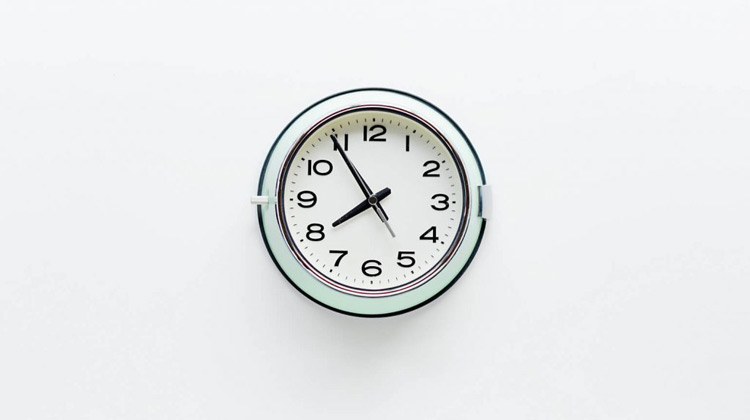Do your employees fill out manual time sheets? Or enter hours worked in a spreadsheet? Are you 100% sure that the staff uses working hours to achieve the company's goals? Do you track all performance indicators? Do you keep company productivity statistics?
If you answered most of these questions with “I don't know!” or “Yes, we still do everything by hand”, then it’s time to join the digital age.
Investing in time trackers saves the company's budget and eliminates time theft due to:
- Late start and early finish;
- Excessively long breaks;
- Unauthorized overtime work;
- Personal activities at work;
- Abuse of social networks and entertainment sites.
Many people know the traditional way of recording the working time of employees: recording the arrival and departure from work. But this is a superficial method which only shows the actual presence in the office; it does not say anything about productivity and the use of working hours. Let's look at what time tracking is and what it consists of in 2022.
What is employee time tracking?
Employee time tracking is a count of the hours worked between entry and exit from the workplace, as well as overtime and shortfalls that arose for any reason.
While most companies already keep track of time and the concept looks familiar, that doesn't mean the way they do it shouldn't be modernized. In the past, an employee would sign in and out of work using good old paper and a pen. There are companies that continue to do this and add extra work to themselves. Imagine the volume of paperwork and documentation in a company with a large staff and the time spent manually processing protocols.
Now, many automated systems are available such as timesheets, software for a computer or phone, timer-based programs, biometric systems and fingerprint scanning systems, and employee time tracking and productivity programs. Using these technologies, the company manages resources better, spending just fifteen minutes per day on it. In addition to this, many time tracking services offer other services such as payroll, project and task management, screen shots, and user webcams.

Goals of employee time tracking
There are dozens of time tracking solutions on the market, making it difficult to choose. To determine the right one for you, compare the options available and build on the goal you set for tracking time. It could be:
- Simple employee time tracking and timesheet management.
- Increasing work productivity.
- Issuing transparent invoices to clients.
- Project and task management.
- Accounting for invisible tasks such as phone calls, meetings, chatting with a colleague about a project, which quietly take up a huge part of the time.
- Fair payroll.
- Statistics in real time + accounting from the phone.
Who needs employee time tracking?
Yaware presented 19 time tracking applications ranging from IT companies to manufacturing firms. Time tracking is suitable for all teams that spend most of their working day on the computer. Here is a small list of users who benefit the most from time tracking:
Companies with hourly and part-time employment.
When you pay your employees for every hour, their working hours are especially valuable to you as an employer. Accounting gives a real picture of their time expenditure, even if all team members have a flexible schedule, work at night or only in the afternoon, or come / leave the office at different times and days of the week.
Companies with hourly wages.
Instead of relying on inaccurate and often incomplete data from notes or, even worse, from the memory of your employees, you can have a detailed record of hours worked. This not only guarantees that the amount of work will be paid in full, but also allows you to build an honest, transparent relationship between the manager and the staff.
Nonprofit and charitable organizations, educational institutions.
Since they operate almost entirely on donations or the state budget, they are under serious financial oversight from the governing bodies, as well as their sponsors. However, when you can detail where the time and money went, accountability becomes much less of an issue.
CASE: accounting of working hours in an construction company
“Yaware.TimeTracker pointed out the moments that affected the company's security and efficiency.”
Freelancers.
When you're freelancing or running your solo business, the last thing you want is to work for free. This is where time tracking comes into play. Even with the simplest app, you can keep track of your stats, fight distractions, and make sure every piece of work gets paid for by the customer.
Remote commands.
Employee time tracking is beneficial not only for the employer, as a way to control from a distance, but also for the staff, because it helps to keep the manager aware of his or her productivity and contribution to the final product. By installing software on a computer, an employee can be sure that he or she will never be suspected of idleness, and the manager will be able to give more freedom to remote staff, without fear and a decline in work efficiency.
Managers seeking to increase productivity.
For the average employee, a time sheet is just a collection of obscure numbers, but for managers and business owners, it is an invaluable source of information. With enough data, they can identify the most profitable projects, pinpoint any bottlenecks, and see which unproductive tasks are stealing employees' time. This will give the manager an understanding of how to increase productivity and make the business more successful.
What are the benefits of employee time tracking?
Time is one of the most valuable resources. In any business, time tracking is a prerequisite for achieving necessary data indicators, including income, expenses, productivity. Tracking something helps you evaluate it objectively. Measuring something also helps to understand the aspects that prevent that particular metric from working. Understanding these aspects will help you realize your mistakes and change your approach.
Thus, the initial benefit of employee time tracking is the ability to obtain targets that you can work on to optimize and improve the processes in your business. A detailed list of benefits is provided below:
- Increases productivity, analyzes every aspect of the working day, from an hour spent at work to a 20-minutes lunch break, which turns into 2 hours of inactivity.
- Shows bottlenecks.
- It makes employees more responsible for their work and helps them not to be distracted, realistically assess deadlines and workloads.
- Records billable hours to make it easier to bill clients and calculate payroll.
- Eliminates micromanagement so that the leader devotes time to managerial and strategic activities, rather than administrative ones.
- Fixes processing as a prerequisite for professional burnout.
- Shows websites and programs used by staff.
- Controls violations of the work schedule: lateness, early departures.
- Analyzes the load on teams and the need for additional staff.
- Assesses the payback of labor resources.
The Best Ways to Track Employee Time
Trust in Words
If you have just completed a project that involved three team members, then in order to estimate the cost of their work, ask employees how much time they spent on tasks. Based on the answers, make a rough estimate and bill accordingly.
Pros: Fast and easy method.
Cons: inaccurate. You do not evaluate how the staff spends paid time, but trust the subjective opinion of employees.
Paper Time Tracking
To implement this approach, you need a watch, a notebook, and a pen. Employees simply count the time and write it down on a sheet, or if you need a more detailed structure, fill out a printed time sheet.
Pros: Can be used everywhere: in the office, surrounded by technology, or in the middle of nowhere, working without Wi-Fi.
Cons: there is a risk of losing or damaging the paper time sheet. Also, this method involves additional time spent on filling in and processing data, can you imagine how many days you will analyze the timesheets of 50 employees?
The Excel spreadsheet method
This method is very flexible and is used to record how much time employees spend on tasks. Each time they work on something, they must record it in a spreadsheet.
Pros: No need to spend money on hardware: just use Google Sheets and the clock.
Cons: Requires a high degree of trust in the staff. What's more, entering time manually can be tedious and erroneous, and not suitable for billing purposes.
Timer
If you do not want to manually count the time, install passive tools – timers. These desktop applications run all the time, all you need to do is stop and start the counter manually.
Pros: The most automated method of the above.
Cons: In general, it is less accurate. Staff forget to press start and finish, and do not always indicate when they are working and not when they are spending time on personal tasks. In addition, not all employees will like to burden themselves with additional work – timer control.
PC software
The most accurate and efficient method available today. Programs such as Yaware TimeTracker track employee time without any effort from managers and staff. Simply install the software once on computers and set basic settings. In addition to tracking time, the program shows user productivity, a list of used sites, helps to calculate salaries and manage projects.
Pros: the more knowledge, the higher the efficiency. In addition, it takes no more than 15 minutes a day to process reports. Each employee gets access to their statistics, and the manager gets access to group statistics. When you use this method, you don't have to wonder what time is being spent on and what projects are getting disproportionate attention – you will have objective statistics.
Cons: Some may view employee time tracking as an invasion of privacy or as a sign that you don't trust them.
Try before you buy
Sometimes what looks like a perfect solution on paper turns out not to be so in practice. There might be concerns the service will be too slow, difficult to use, or just not for you. Most trackers, including Yaware.TimeTracker, offer a free trial period. So don't be shy: try it, see how it works before making a final decision.


